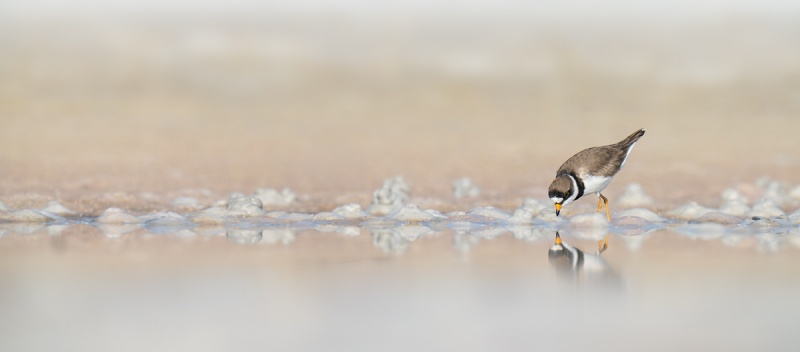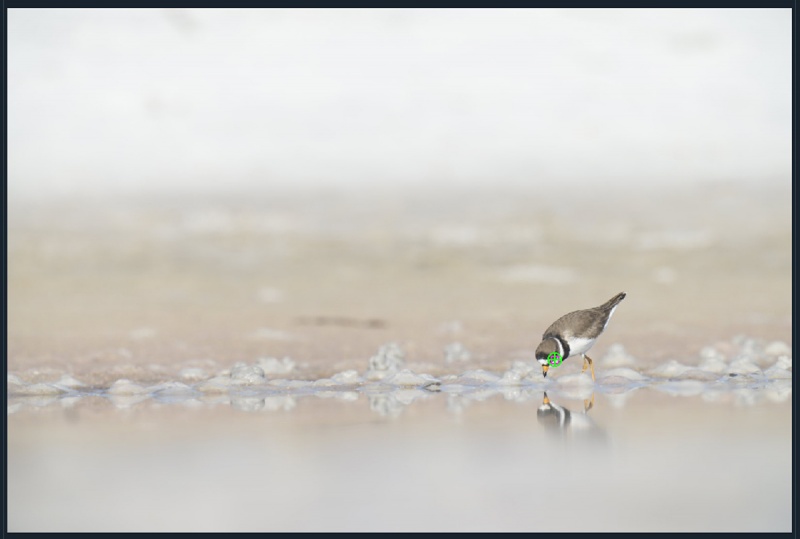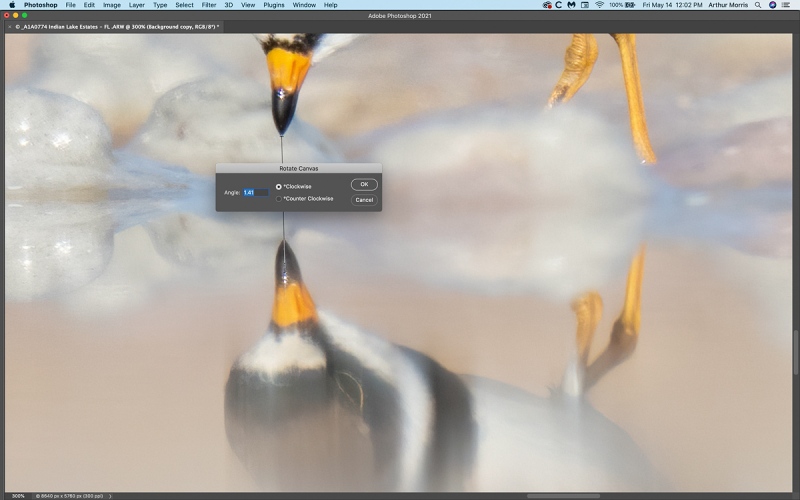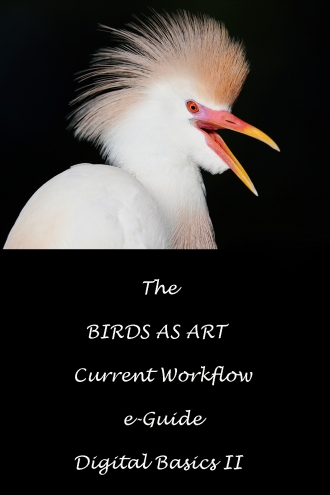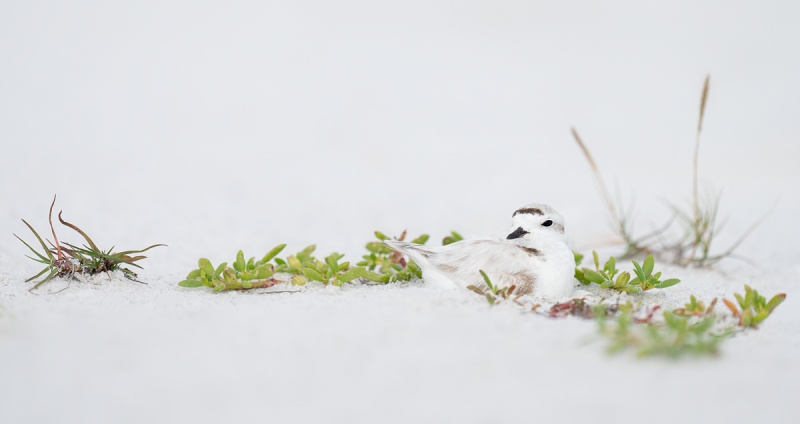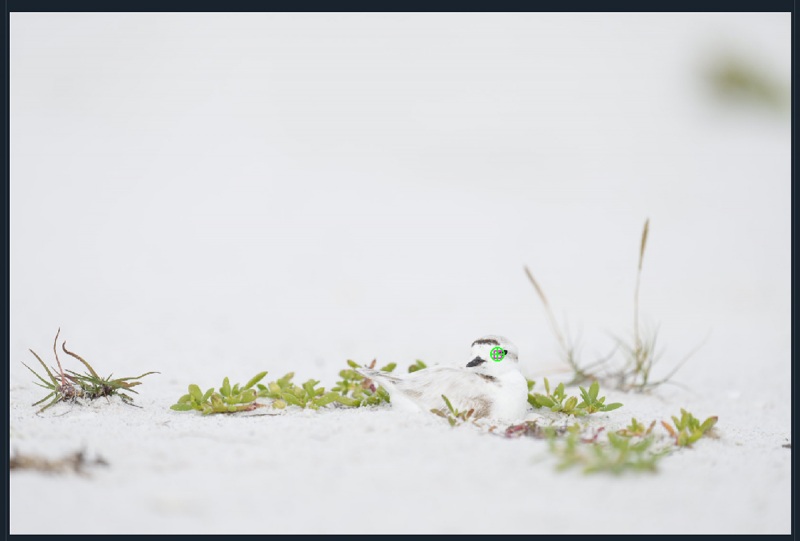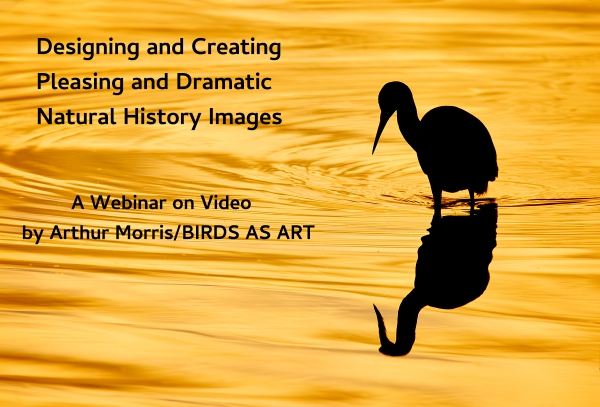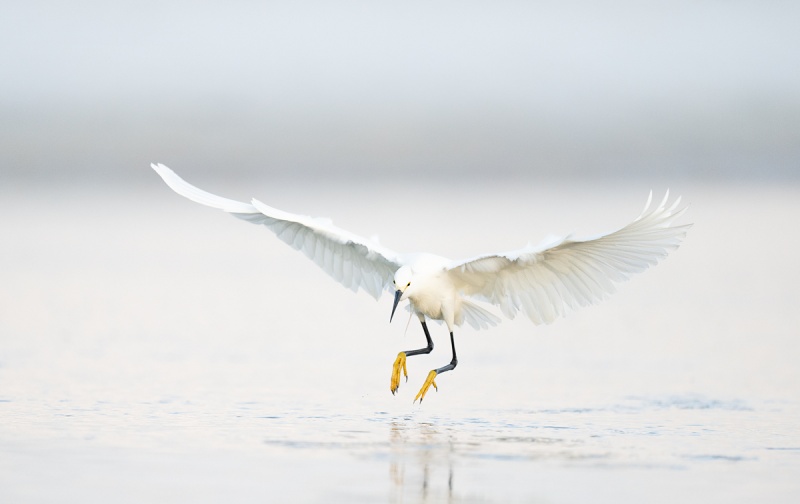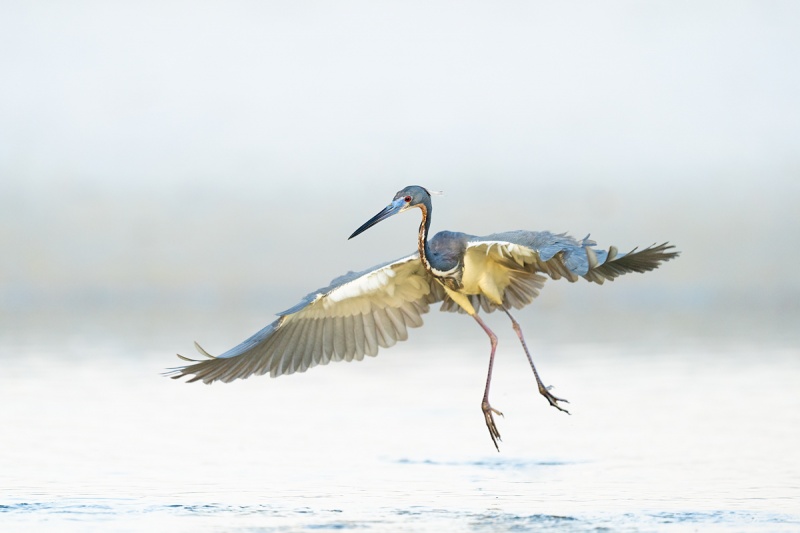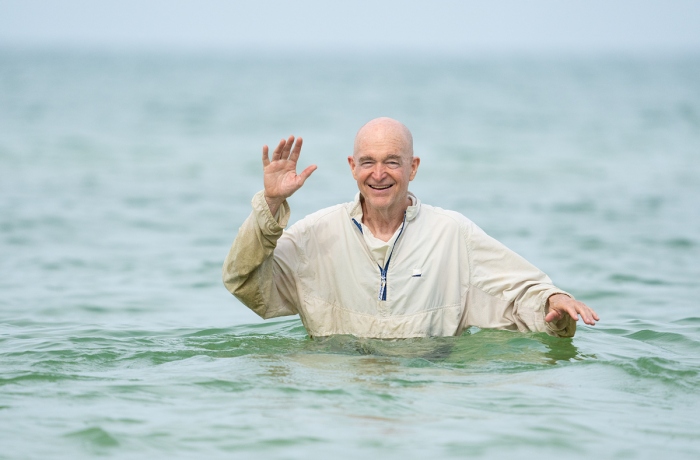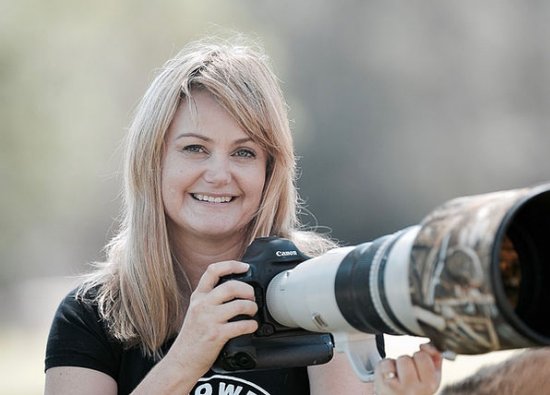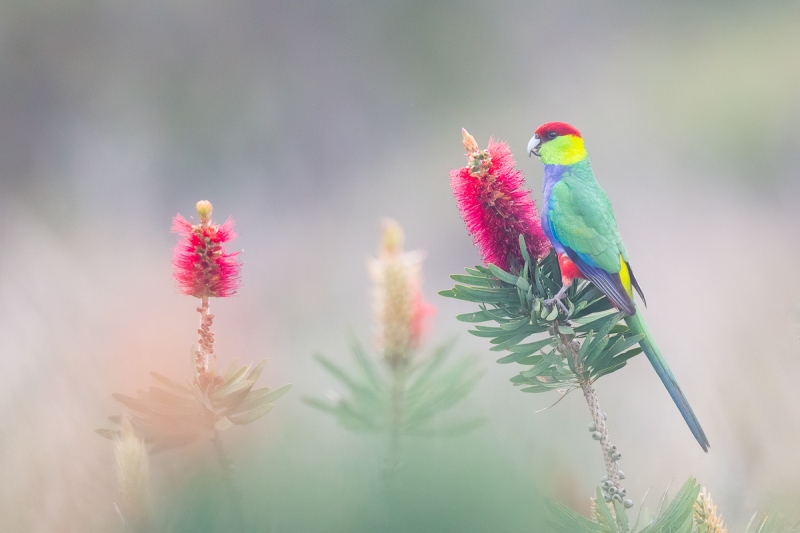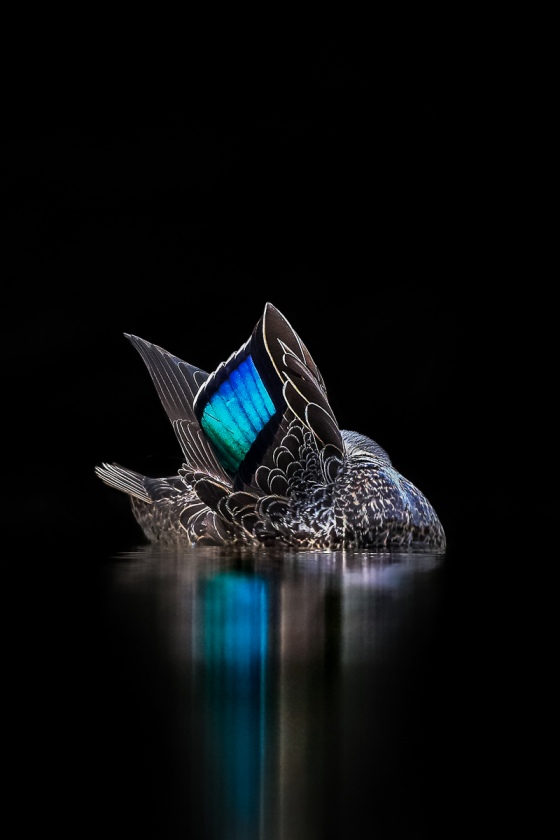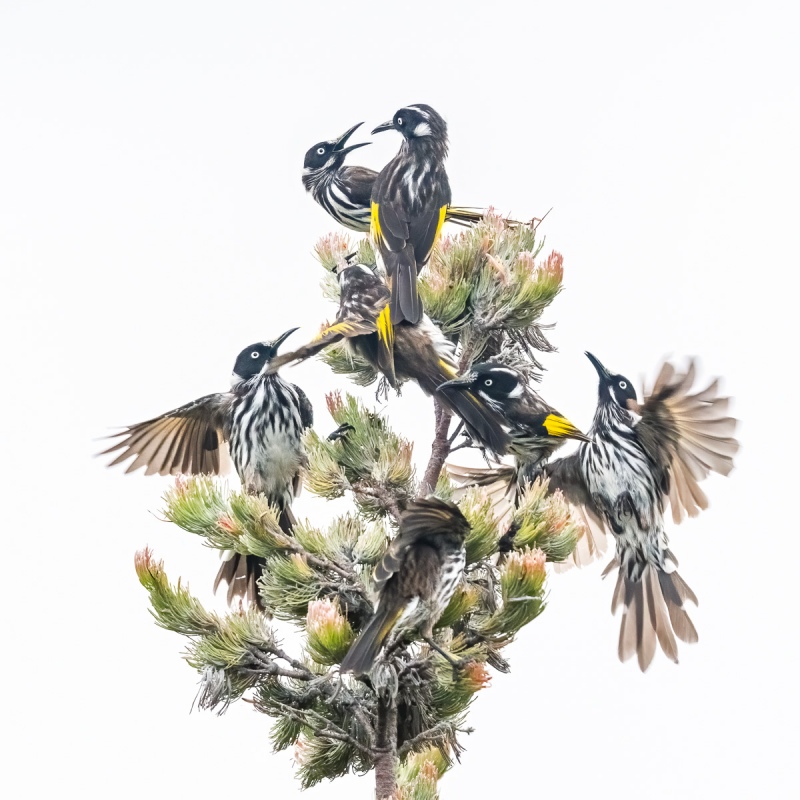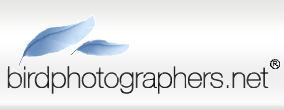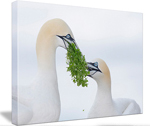May 15th, 2021 Need Your Help
In general, shorebirds live in flat, featureless, — usually pretty ugly places. There is not usually much of interest on a sandy beach or a mudflat. Your best chance of creating an artistically pleasing image is to get right down on the ground as close as possible to the bird’s eye level. I did that with Image #1 but not with Image #2 … I was, however, able to include some pretty neat habitat in each of these panoramic images. Please be so kind as to leave a comment and let us know which of the two images you believe to be the more beautiful, and what you liked about it. I am on the fence.
What’s Up?
I dropped Anita off at the lake early. With her 600 GM/a1 on a tripod; she sat in the marsh for two hours hoping to have some Black-necked Stilts land in front of her and copulate. I thought that she was totally nuts. But they did and they did! She got some very nice stuff. I headed back down at about 7:30am and came away with a very few decent Osprey and crane family photos. I worked on some images and took care of some business e-mails. I was glad to learn that IPT veteran Bob Willmschen sold his Canon 100-400 II in mint condition for $1499.00 in early May before it was even listed.
Today is Saturday 15 May 2021. The forecast for early this morning at ILE is for mostly sunny skies and a northeast breeze. I will be heading down to the lake very early and sitting in the lake next to Anita … Wherever you are, and whatever you are doing, I hope that you have a great day.
This blog post took about two hours to prepare and makes 142 consecutive days with a new one. Please remember that if an item — a Delkin flash card, or a tripod head, for example, that is available from B&H and/or Bedfords and is also available in the BAA Online Store, it would be great if you opt to purchase from us. We will match any price. Please remember also to use my B&H affiliate links or to save 3% at Bedfords by using the BIRDSASART discount code at checkout. Doing either often earns you free guides and/or discounts. And doing so always earns my great appreciation.
The BAA Used Gear Page
The Used Gear page continues to be very active. The BAA Used Gear Page is the place to sell your used photographic equipment. We will help you to get your gear sold quickly for 30 to 70% or more than what the big guys are offering … Doubt me? Check out the Recent Sales list at the bottom of the page.
Canon EF 100-400 f/4.5-5.6L IS II Lens
Dan Womack is offering a Canon EF 100-400 f/4.5-5.6L IS II lens in mint condition for $1449.00. The sale includes the front and rear lens caps, the tough fabric lens case, the original shipping box and insured ground shipping via major courier to lower-48 US addresses only. Your item will not ship until your check clears unless other arrangements are made.
Please contact Dan via e-mail.
This incredibly versatile zoom lens — with its amazing .98 meter close focus — was my favorite Canon telephoto zoom lens ever. By far. It is easy to hand hold, great for tight portraits, birds in flight, quasi-macro stuff, and lots more. For flight, it is even better with an R5! The lens sells new for $2399.00 so you can save some hard cash by grabbing Dan’s pretty much new lens now. artie
Please Remember
With income from IPTs now at zero, please, if you enjoy and learn from the blog, remember to use one of my two affiliate programs when purchasing new gear. Doing so just might make it possible for me to avoid having to try to get a job as a Walmart greeter and will not cost you a single penny more. And if you use Bedfords and remember to enter the BIRDSASART code at checkout, you will save 3% on every order and enjoy free second-day air shipping. In these crazy times — I am out at least forty to sixty thousand dollars so far due to COVID 19 (with lots more to come) — remembering to use my B&H link or to shop at Bedfords will help me out a ton and be greatly appreciated. Overseas folks who cannot order from the US because of import fees, duties, and taxes, are invited to help out by clicking here to leave a blog thank you gift if they see fit.
New and Better Bedfords Discount Policy!
You can now save 3% on all of your Bedfords photo gear purchases by entering the BIRDSASART coupon code at checkout. Your discount will be applied to your pre-tax total. In addition, by using the code you will get 2nd day air shipping via Fed Ex.
Grab a Nikon AF-S Teleconverter TC-14E III and save $14.99. Purchase a Canon EOS R5 and your discount will be $116.97. Purchase a Sony FE 600mm f/4 GM OSS lens and save a remarkable $389.94! Your Bedford’s purchase no longer needs to be greater than $1,000.00 for you to receive a discount. The more you spend, the more you save.
Money Saving Reminder
Many have learned that if you need a hot photo item that is out of stock at B&H and would enjoy free second-day air shipping, your best bet is to click here, place an order with Bedfords, and enter the coupon code BIRDSASART at checkout. If an item is out of stock, contact Steve Elkins via e-mail or on his cell phone at (479) 381-2592 (Central time). Be sure to mention the BIRDSASART coupon code and use it for your online order to save 3% and enjoy free 2nd-day air shipping. Steve has been great at getting folks the hot items that are out of stock at B&H and everywhere else. The wait lists at the big stores can be a year or longer for the hard to get items. Steve will surely get you your gear long before that. For the past year, he has been helping BAA Blog folks get their hands on items like the SONY a9 ii, the SONY 200-600 G OSS lens, the Canon EOS R5, the Canon RF 100-500mm lens, and the Nikon 500mm PF. Steve is personable, helpful, and eager to please.


Gear Questions and Advice
Too many folks attending BAA IPTs (remember those?) and dozens of photographers whom I see in the field and on BPN, are–out of ignorance–using the wrong gear especially when it comes to tripods and more especially, tripod heads… Please know that I am always glad to answer your gear questions via e-mail
|
|
|
This image was created on 11 May 2021 on the second day of my recent busman’s holiday at Fort DeSoto. Working on the Panning Ground Pod while seated, I used the Sony FE 600mm f/4 GM OSS lens, the Sony FE 2.0x Teleconverter, and The One, the Sony Alpha 1 Mirrorless Digital Camera (Body Only). ISO 500. The exposure was determined by Zebras with ISO on the rear wheel: 1/800 sec. at f/9 (stopped down 1/3 stop) in Manual mode. AWB at 9:09am when a light cloud obscured the sun for a bit.
Tracking: Expand Spot/AF-C was active at the moment of exposure and performed perfectly. Click on the image to enjoy a wider version.
Image #1: Semipalmated Plover on mudflat with invertebrate burrows, extreme pano
|
Mudflat with Invertebrate Burrows
It is not uncommon to see large areas of exposed mudflats at North Beach in Fort DeSoto dotted with small mounds and pyramidal & irregularly-shaped structures of wet sand. Such landscapes remind me of Mono Lake, but on a much tinier scale, of course. They can be strangely beautiful. With no birds in sight, I set up my gear abutting a small pool on a rising tide with the flat as described above. The little sand piles were so pretty that I made a few images of them without any birds.
The habitat looked perfect for shorebirds and I was confident that I would get some birds. It was a case of if you sit, they will come. The SEPL featured in Image #1 was the first to venture into the shallow pool to feed. It was soon joined by a few more semi-plovers, about a dozen Dunlin, a Black-bellied Plover, and a Willet. Many of the shorebirds wound up coming quite close. Image #1, however, the one of those that showed the habitat quite well, was my favorite from the session by the pretty little mudflat.
The Panning Ground Pod
Having recently (again!) become enamored with ground level shooting, I have been using the Panning Ground Pod more and more when I am at the beach. It gets me right down on the bird’s level and, by using the rear monitor, it allows me to sit rather than to have to lie in the muck and the mud. As soon as I get several pairs of new reading glasses made by Zenni, I will always have a pair on when I am at the beach with the Panning Ground Pod. I will be teaching you a lot about how to use this great product in future blog posts with lots of examples of what it can do. We have six in stock right now.
|
|
Image #1A: AF Point screen capture for the Semipalmated Plover on mud flat with invertebrate burrows, extreme pano image
|
You-Gotta-Be-Kidding-Me AF Performance
Can your camera body detect and track the eye of a distant, small-in-the-frame bird when you are working at 1200mm? The Sony Alpha a1 can. You will not get consistent results unless your camera is set up exactly right. If you own an a1 and are not getting the AF performance that you want and expect, consider joining the SONY a1 Info and Updates group. Scroll down for details.
The Image Optimization
By comparing Image #1 with Image #1A, the original capture, you can see my chosen crop, the background (and a bit of mud) clean-up, and the Gaussian Blur applied mostly to the background but to a bit of the foreground as well.
|
|
Image #1B: Photoshop trick used to level the Semipalmated Plover on mud flat with invertebrate burrows, extreme pano image
|
A Great Photoshop Leveling Tip
In Digital Basics II, I describe several methods for leveling an images. One of my favorites involves the use of the Ruler Tool. For Image #1 I drew a line from the tip of the actual bill to the clearly defined tip of the bill in the reflection. Then I hit Image > Rotate > Arbitrary and then hit OK. Using my keyboard shortcuts the entire process take less than ten seconds. If you are a slow-poke. This image needed 1.41 degrees of clockwise rotation. My excuse? Without my glasses on, I cannot see the activated level on the rear monitor very well.
|
|
The BIRDS AS ART Current Workflow e-Guide (Digital Basics II).
You can order your copy from the BAA Online Store here, by sending a PayPal for $40 here, or by calling Jim or Jennifer weekdays at 863-692-0906 with your credit card in hand. Be sure to specify Digital Basics II.
|
The BIRDS AS ART Current Workflow e-Guide (Digital Basics II)
The image rotation, Gaussian Blur, and clean-up techniques mentioned above and tons more great Photoshop tips and techniques, along with all of my personalized Keyboard Shortcuts — are covered in detail in the BIRDS AS ART Current Workflow e-Guide (Digital Basics II), an instructional PDF that is sent via e-mail. Learn more and check out the free excerpt in the blog post here. While the new e-Guide reflects my MacBook Pro/Photo Mechanic/DPP 4/Photoshop workflow, folks using a PC and/or BreezeBrowser will also benefit greatly by studying the material on DB II. Note: folks working on a PC and/or those who do not want to miss anything Photoshop may wish to purchase the original Digital Basics along with DB II while saving $15 by clicking here to buy the DB Bundle.
Folks who learn well by following along rather than by reading can check out the complete collection of MP 4 Photoshop Tutorial Videos by clicking here. Note: all of the videos are now priced at an amazingly low $5.00 each.
You can learn how and why I converted all of my Canon digital RAW files in DPP 4 in the DPP 4 RAW Conversion Guide here. More recently, I became proficient at converting my Nikon RAW (NEF) files in Adobe Camera Raw. About two years ago I began converting my Nikon and Sony RAW files in Capture One Pro 12 and continue to do so today.
To purchase Capture One, please use this link. Then you can learn more about Capture One in the Capture One Pro 12 Simplified MP4 Video here. The next step would be to get a copy of Arash Hazeghi’s “The Nikon Photographers’ Guide to Phase One Capture One Pro e-Guide” in the blog post here.
You can learn advanced Quick Masking and advanced Layer Masking techniques in APTATS I & II. You can save $15 by purchasing the pair. Folks can learn sophisticated sharpening and (NeatImage) Noise Reduction techniques in The Professional Post Processing Guide by Arash Hazeghi and edited by yours truly. Please use this link to purchase NeatImage.
|
|
|
This image was created on 12 May 2021 on the last day of my recent busman’s holiday at Fort DeSoto. While standing, I used the hand held Sony FE 600mm f/4 GM OSS lens and The One, the Sony Alpha 1 Mirrorless digital camera. ISO 400. Exposure determined via Zebras with ISO on the rear dial: 1/2000 sec. at f/4 (wide open) in Manual mode. AWB at 9:29am with some faint clouds taking the edge off the sun.
Tracking: Expand Spot/AF-C was active at the moment of exposure and performed perfectly by nailing the plover’s eye. Click on the image to see a larger version.
Image #2: Snowy Plover, male on eggs, pano
|
Why Stand?
First off, thanks to Anita North who shared a similar image of this bird on the nest with me, thus providing me with significant inspiration. I opted to stand to eliminate some foreground vegetation. I chose f4 for a similar reason – to render the vegetation in front of the bird on our right as out-of-focus as possible. Situations like this where I needed to keep the lens raised and steady without a tripod were very tough on my left shoulder. The shoulder is, however, feeling quite a bit better with a bit of rest and rehab.
|
|
Image #2A: AF Point screen capture for the for the Snowy Plover, male on eggs, pano image
|
The Original and the AF Point
Here again you can note the pano crop and my beach clean-up efforts. I could have added either teleconverter and made an image with the bird much larger in the frame, but inspired by Anita, I went with the wider view so as to include the mighty attractive beach vegetation.
As for the Sony Alpha a1 AF system, what can I say? The results that you see above are typical of those achieved with Animal Eye Tracking. If you own an a1 and are not getting the results that you want and expect, consider joining the SONY a1 Info and Updates group. The details are immediately below.
Sony Alpha a1 AF
Barring operator error, the performance of the Sony Alpha a1 AF system at any focal length — as we saw in Image #1 above, is, when the a1 is set up properly as detailed in the in e-mails to the Sony Alpha a1 Info & Updates group, more than remarkable. Early on, there was lots of discussion within the group with many preferring multiple back button approaches. For me a simple shutter button approach with the right AF settings that yield 99% sharp-on-the-eye images is best. By far. It is super-simple and mega-effective. In the next SONY Alpha a1 Set-up and Info Group e-mail, I will be sharing what I have learned as to when and it what situations it is best to abandon Wide. We have already learned to limit the AF Area choices and to switch AF Areas quickly and conveniently. The default method of switching AF points with the C2 button is both slow and cumbersome.
SONY Alpha a1 Set-up and Info Group
The SONY Alpha a1 Set-up and Info Group is going great guns as folks chime in with thoughtful questions and experience-based advice. We are now up to an astounding 41 folks. Early on, we discussed the myriad AF options. I gave my opinion as to the best one for flight and general bird photography. More recently, we have been in contact with folks at SONY sharing our thoughts, experiences, and frustrations with the EVF blackout problem.
All who purchased their Alpha a1 bodies via a BAA affiliate link will receive a free subscription to the Sony Alpha a1 Set-Up and Info Updates after shooting me their receipts via e-mail. (Note: it may take me several days to confirm B&H orders.) This same service may be purchased by anyone with an a1 body via a $150.00 PayPal sent to birdsasart@verizon.net indicating payment for Alpha a1 Info Updates. Alternatively, folks can call Jim weekdays at 1-863-692-0906 to pay via credit card. New members will receive composite e-mails that summarize all previous discussions.
Typos
With all blog posts, feel free to e-mail or to leave a comment regarding any typos or errors.
May 14th, 2021 Which?
Which of today’s two featured images (made only minutes apart), is the strongest? Why?
What’s Up?
I wound up staying in on Thursday morning and worked on an e-mail for the Sony Alpha a1 Info and Updates group. New member Mike Liddick asked about the Custom Set. Memory menu item. In that highly detailed e-mail, I mentioned that one of my three huge gripes with the a1 (and with previous high-end SONY bodies as well), is that you cannot save Custom Key settings when saving a Camera Set. Memory. That makes saving a Camera Set Memory pretty much worthless to me.
I am not sure where the rest of the morning went, but I did catch up on a week’s worth of Jeopardy. An afternoon visit to the dermatologist resulted in lots of icy lesion-removals — darn, that thing burns. Dr. Hart also removed two other larger ones surgically. Those did not hurt at all.
Today is Friday 14 May 2021. The forecast for ILE this morning is calling for partly to mostly cloudy skies with light winds from the north. I will head down to the lake for a bit to see what’s up. Wherever you are, and whatever you are doing, I hope that you have a great day.
Thanks to all who shared scanning advice yesterday by leaving a comment. I did have Silver Fast with my Nikon Cool Scan; I just could not get the device to work well on a consistent basis …
This blog post took more than an hour to prepare and makes 141 consecutive days with a new one. Please remember that if an item — a Delkin flash card, or a tripod head, for example, that is available from B&H and/or Bedfords and is also available in the BAA Online Store, it would be great if you opt to purchase from us. We will match any price. Please remember also to use my B&H affiliate links or to save 3% at Bedfords by using the BIRDSASART discount code at checkout. Doing either often earns you free guides and/or discounts. And doing so always earns my great appreciation.
|
|
Designing and Creating Pleasing and Dramatic Natural History Images
A Video Webinar: $30 by electronic download
Order your copy by clicking here.
|
Designing and Creating Pleasing and Dramatic Natural History Images
A Video Webinar
In this 1 hour 28 minute plus video you will learn and be inspired. We cover everything from the very basics to the fine points. After a brief bio, the topics include Behavior, Action, Diagonal Lines, and the Cuteness Factor; Birds in Flight — The Holy Grail of Bird Photography; Mis-Framing!; Basic Image Design/HORIZONTALS: Get the subject out of the center of the frame. Basic Image Design/VERTICALS: The center of the frame is generally fine; The Importance of BACKGROUND; Isolating the Subject; Other Elements of Composition; On Getting Low; Going Wide for Bird-scapes; Super-tight!; Working in Sunny Conditions; Working in Cloudy Conditions; Working in Foggy Conditions; Working in the Shade; Working in Bad Weather; Creating Back-lit Images; Creating Silhouettes; and Creating Pleasing Blurs.
Each segment of the program consists of an average of about 15 images that will drive home the points being made, educate you, and inspire. The instructions and advice, given clearly and concisely, are based on my near-38 years of experience photographing birds with telephoto and super-telephoto lenses. And on several decades of creating educational blog posts.
This presentation is based on the webinar that I did for the South Shore Camera Club in April. You can find some of the comments below along with comments from two of the folks who viewed the webinar the night before the DeSoto IPT began.
You can order your copy of Designing and Creating Pleasing and Dramatic Natural History Images/A Video Webinar by clicking here or by calling Jim with your credit card in hand at 863-692-0906.
Please Remember
With income from IPTs now at zero, please, if you enjoy and learn from the blog, remember to use one of my two affiliate programs when purchasing new gear. Doing so just might make it possible for me to avoid having to try to get a job as a Walmart greeter and will not cost you a single penny more. And if you use Bedfords and remember to enter the BIRDSASART code at checkout, you will save 3% on every order and enjoy free second-day air shipping. In these crazy times — I am out at least forty to sixty thousand dollars so far due to COVID 19 (with lots more to come) — remembering to use my B&H link or to shop at Bedfords will help me out a ton and be greatly appreciated. Overseas folks who cannot order from the US because of import fees, duties, and taxes, are invited to help out by clicking here to leave a blog thank you gift if they see fit.
New and Better Bedfords Discount Policy!
You can now save 3% on all of your Bedfords photo gear purchases by entering the BIRDSASART coupon code at checkout. Your discount will be applied to your pre-tax total. In addition, by using the code you will get 2nd day air shipping via Fed Ex.
Grab a Nikon AF-S Teleconverter TC-14E III and save $14.99. Purchase a Canon EOS R5 and your discount will be $116.97. Purchase a Sony FE 600mm f/4 GM OSS lens and save a remarkable $389.94! Your Bedford’s purchase no longer needs to be greater than $1,000.00 for you to receive a discount. The more you spend, the more you save.
Money Saving Reminder
Many have learned that if you need a hot photo item that is out of stock at B&H and would enjoy free second-day air shipping, your best bet is to click here, place an order with Bedfords, and enter the coupon code BIRDSASART at checkout. If an item is out of stock, contact Steve Elkins via e-mail or on his cell phone at (479) 381-2592 (Central time). Be sure to mention the BIRDSASART coupon code and use it for your online order to save 3% and enjoy free 2nd-day air shipping. Steve has been great at getting folks the hot items that are out of stock at B&H and everywhere else. The wait lists at the big stores can be a year or longer for the hard to get items. Steve will surely get you your gear long before that. For the past year, he has been helping BAA Blog folks get their hands on items like the SONY a9 ii, the SONY 200-600 G OSS lens, the Canon EOS R5, the Canon RF 100-500mm lens, and the Nikon 500mm PF. Steve is personable, helpful, and eager to please.


Gear Questions and Advice
Too many folks attending BAA IPTs (remember those?) and dozens of photographers whom I see in the field and on BPN, are–out of ignorance–using the wrong gear especially when it comes to tripods and more especially, tripod heads… Please know that I am always glad to answer your gear questions via e-mail
|
|
|
This image was created on 11 May 2021 on my recent busman’s holiday at Fort DeSoto. While seated, I used the the hand held Sony FE 600mm f/4 GM OSS lens and The One, the Sony Alpha 1 Mirrorless digital camera. ISO 2000. Exposure determined via Zebras with ISO on the rear dial: 1/2500 sec. at f/4 (wide open) in Manual mode. AWB at 7:19am with clouds in the eastern sky.
Wide/AF-C was active at the moment of exposure and performed perfectly. Click on the image to see a larger version.
Image #1: Snowy Egret fishing in flight at a washover pool
|
Soft Light Flight
It’s funny. On the 2nd DeSoto IPT, I used only the hand held 200-600 G lens on our morning sessions. On my recent busman’s holiday visit I used the 600 f/4 GM lens every morning. One day I carried the 200-600 in the big pack on the rear of my X-traHand Vest (now out of production). I never even thought about using it. Understand that on clear sunny mornings the 2-6 is always my choice. Even though it is four clicks slower than the 600 (f/6.3 as compared to f/4), it is much easier to hand hold and framing the birds in flight and in action is much easier as well.
With clouds on the eastern horizon for all three of our morning visits, I grabbed the 600, an Induro tripod topped by a FlexShooter Pro, and the Panning Ground Pod. By the third day I left the tripod in the car! For both of today’s two featured images, I shot flight using a quasi-knee pod technique: I rested my left forearm on the top of my bent left leg and raised the rig with my left arm when I saw a bird take flight. This put some strain on my left shoulder.
Easy ISO Quiz
If I had been using the slower 200-600mm lens (f/6.3) instead of the faster, heavier 600mm f/4, what ISO would I have needed to keep the same exposure?
Alpha a1 AF
I kept several frames of this bird from one fishing sequence. The bird must have spotted some fish as its eyes were so large and so, so sharp, that it looked as if they were bugging out of its head. I continued to be amazed by the AF performance of the Alpha a1. If you own one and are not getting the results that you want and expect, consider joining the SONY a1 Info and Updates group. Scroll down for details.
|
|
|
This image was also created on 11 May 2021 on my recent busman’s holiday at Fort DeSoto. Again, while seated, I used the the hand held Sony FE 600mm f/4 GM OSS lens and The One, the Sony Alpha 1 Mirrorless digital camera. ISO 2000. Exposure determined via Zebras with ISO on the rear dial: 1/2000 sec. at f/4 (wide open) in Manual mode. AWB at 7:23am with clouds in the eastern sky.
Wide/AF-C was active at the moment of exposure and performed perfectly. Click on the image to see a larger version.
Image #2: Tricolored Heron Egret fishing in flight at a washover pool
|
Changing the Exposure Based on the Tonality of the Subject, and Then Getting Lucky
I knew that I had the right exposure for the Snowy Egrets tooling around the pool in the very low light. When I saw the Tricolored Heron standing on the far shore of the washover pool, I lowered my shutter speed from 1/2500 sec. to 1/2000 sec. Why? Because the whites on the tricolored are not as bright as the whites on the snowies. Darker tones need more light to be properly exposed than lighter tones.
My good thinking was rewarded when the bird took flight in search of a fish. I kept the bird in the center of the frame — always a challenge for me, and made eight out of eight sharp frames. Based on wing position, I kept only this one.
ISO versus Shoulder Pain and Dysfunction …
As noted above, with the overcast weather each day, I opted to work with the 600m f/4 to save four clicks of ISO. This is especially helpful when shooting flight and action in low light. But when shooting flight and action, it is almost always best to hand hold rather than to work on a tripod; it is easier to follow and frame the birds. But all that is true only if you are easily able to handle the weight of the faster lens … Over the last two mornings I did a lot of work with the 600 using the Panning Ground Pod. With that, there is no stress on my left shoulder. But when I work on the ground, whether sitting or lying down flat, I tend to use my right arm to get up and down. That places lots of stress on my right shoulder.
On our last morning, I handheld the big lens quite a bit while standing for both static subjects and birds fishing in the surf. Attempting to hold the big lens up for ten or twenty or more seconds, places a tremendous amount of stress on my left shoulder. By Wednesday afternoon, it was really hurting. I need to quit trying to be a hand holding hero and work with the 600 on a tripod especially when photographing static subjects …
Sony Alpha a1 AF
Barring operator error, the performance of the Sony Alpha a1 AF system at any focal length (when the a1 is set up properly as detailed in the in e-mails to the Sony Alpha a1 Info & Updates group), continues to astound me. Early on, there was lots of discussion within the group with many preferring multiple back button approaches. For me a simple shutter button approach with the right AF settings that yield 99% sharp-on-the-eye images is best. By far. It is super-simple and mega-effective. In the next SONY Alpha a1 Set-up and Info Group e-mail, I will be sharing what I have learned as to when and it what situations it is best to abandon Wide. We have already learned to limit the AF Area choices and to switch AF Areas quickly and conveniently. The default method of switching AF points with the C2 button is both slow and cumbersome.
SONY Alpha a1 Set-up and Info Group
The SONY Alpha a1 Set-up and Info Group is going great guns as folks chime in with thoughtful questions and experience-based advice. We are now up to an astounding 41 folks. Early on, we discussed the myriad AF options. I gave my opinion as to the best one for flight and general bird photography. More recently, we have been in contact with folks at SONY sharing our thoughts, experiences, and frustrations with the EVF blackout problem.
All who purchased their Alpha a1 bodies via a BAA affiliate link will receive a free subscription to the Sony Alpha a1 Set-Up and Info Updates after shooting me their receipts via e-mail. (Note: it may take me several days to confirm B&H orders.) This same service may be purchased by anyone with an a1 body via a $150.00 PayPal sent to birdsasart@verizon.net indicating payment for Alpha a1 Info Updates. Alternatively, folks can call Jim weekdays at 1-863-692-0906 to pay via credit card. New members will receive composite e-mails that summarize all previous discussions.
Typos
With all blog posts, feel free to e-mail or to leave a comment regarding any typos or errors.
May 13th, 2021 What’s Up
On our last morning at DeSoto there were some egrets in the washover pond, but with few baitfish, there was very little action. Working on the Panning Ground Pod with the 600 f/4GM lens, I went after some more eye-level Marbled Godwit images using the rear monitor. After a bit, I added the 1.4X TC. Several really sweet Dunlins made their way into the shallow pool I was working. I did well. My problem the previous day was that the Dunlin never stopped their rapid, sewing-machine-like feeding. After about ten minutes, four Dunlin, lit by soft early sunlight, decided to stop and stand right in front of me and right down sun angle to rest and preen. I made a lot of images. Really fine images.
At times I sat with the lens at ground level and worked off the monitor. At times I got down flat on the muck and worked through the viewfinder. And at times I lay on the sandy mud and worked off the monitor. The advantage of the latter is that it is much easier for me to see what is going on without my glasses as I am only a few inches from the monitor. When I am sitting and using the rear monitor my left eye is about 20 inches from the monitor; without my glasses, I am often guessing as to the AF performance and the orientation and head angle of the subject.
Next I decided to try to get close to the Red Knot flock on a different flat that abutted the lagoon. They were much tamer than they had been the day before. I got on the ground easily at about fifty yards and advanced slowly mostly by rolling. Yes, rolling. No matter how I advanced, both shoulders were hurting. After about an hour, I had moved about 40 yards and gotten within about ten yards of the birds — easy pickings at 1200mm on a then-cloudy/very bright morning. But the flock was tightly packed; isolating a single bird was close to impossible. I did get one pretty nice bird sleeping and was able to isolate a single preening Dublin, but that was about it.
Today is Thursday 13 May. The forecast for this morning at ILE is for partly cloudy turning cloudy with a northeast wind … I have not decided whether or not to head down to the lake as I need to get some work done for the Sony Alpha a1 Info and Updates group. Wherever you are, and whatever you are doing, I hope that you have a great day.
This blog post took more than 2 hours to prepare and makes 140 straight days with a new one. Please remember that if an item — a Delkin flash card, or a tripod head, for example, that is available from B&H and/or Bedfords and is also available in the BAA Online Store, it would be great if you opt to purchase from us. We will match any price. Please remember also to use my B&H affiliate links or to save 3% at Bedfords by using the BIRDSASART discount code at checkout. Doing either often earns you free guides and/or discounts. And always earns my great appreciation.
|
|
|
Notice the under-side of the right sleeve of my sun protective blouse. You can tell that I had been doing lots of crawling on my belly in the muck.
artie after Gulf bath. Image courtesy of and copyright 2021: Anita North
|
Cleaning Up at the Beach
It seemed as if I had been photographing for many hours; I thought that it was after eleven. So I headed back to the car, wet and covered in sand from head to toe. I was shocked to see that it was only 9:30am. Anita had headed off early to the far north end of Outback Key. I thought that she might already be back to the car. She was not. I called her cell and got her. She was headed back, but was still about 15 minutes away. I asked her to meet me at the Gulf beach in front of the parking lot and she did. Then, with all of my clothes on, I went for a delightful swim to get cleaned up a bit, albeit in saltwater. At my request, she created a few before snaps of me (dirty and sandy), and a few after snaps (cleaner and wetter), with her 200-600.
Now I was ready for a grand shower in the men’s room bathhouse at North Beach. Several years back, they redid the showers, but removed the bench and the clothes hooks. I was puzzled as to why. So anyhoo, I walk in, go around the new partition, and much to my surprise, I see a lovely, wide wooden bench. Could it get any better? So I put my complete change of clothes on the bench along with a brand new can of Johnson’s baby powder, my sandals, my robe, and a clean towel. I get out of my wet, sandy clothes and turn around. There I see eight very clean shower stalls. With all of the plumbing removed. As Anita would say, “Rotter!”
So I put my wet, sandy clothes back on and headed to the multi-level outdoor sprinkler/shower nearby. I took a nice shower, eventually stripping down to just my green Jockey shorts. Yikes! (No pictures of that, thank the lord.) I quickly put on my robe, made my way back to the bench, powdered my feet, and got dressed.
On the way back to ILE we stopped at Bass Pro Shops in Brandon for a bit of shopping, at Starbucks in Bartow (so Anita could get another fix), and at Publix in Lake Wales to pick up something for dinner. We got back to ILE at about 3:30pm. It was just another exciting day in the life of a professional bird photographer.
Scanning Help Needed
If you know anything about scanning slides, please leave a comment below or contact Jeff Walters via e-mail.
Jeff Walters/May 12, 2021 at 4:42 pm
Great skimmer shots and mating avocets images show truly why I love bird photography. Thanks to your friends for sharing their images and thank-you for bringing them to us in your blog.
If you had a mess of old slides, how would you go about digitizing them today, sir? And could it be done for a reasonable cost? I ask, because seeing the skimmer image reminds me of shots I have on slide film from years past. I have many terrific skimmers shots, and image of many other species from wetlands on slide film. I would love to find an affordable way to get them converted to digital. Anyone’s comments or assistance would be most appreciated and especially any guidance from you Artie! Thanks to all.
Arthur Morris/BIRDS AS ART/May 12, 2021 at 7:27 pm
Hi Jeff,
Scanning slides is not my area of expertise … Lots of folks (including me), used something like a Nikon Cool Scan. Or tried to. Most of the time, it did not work at all. When it did, the results were not very good. Getting a drum scan is best but they are expensive. I will run this in the blog and see if anyone can help. Don’t forget that compared to digital, film sucks. Period. So it stands to reason that by scanning something that sucks to being with, you will wind up with something that sucks … If you follow my drift.
with love, artie
ps: if you do want to have some slides scanned, I would limit that to your very strongest images …
Bedfords
The very affable Steve Elkins asked me to let you know that Bedfords has many Canon R5 bodies in stock right now. He is expecting some Control Ring Adapters, more than a few Canon RF 70-200s, and several RF 800mm lens in a day or two. Don’t forget to save 3% at Bedfords (and enjoy free 2nd-Day Air fed-Ex) by using the BIRDSASART discount code at checkout.
Please Remember
With income from IPTs greatly reduced, please — if you learn from and enjoy the blog, remember to use one of my two affiliate programs when purchasing new gear. Doing so just might make it possible for me to avoid having to try to get a job as a Walmart greeter and will not cost you a single penny more. And if you use Bedfords and remember to enter the BIRDSASART code at checkout, you will save 3% on every order and enjoy free second-day air shipping. In these crazy times — I am out at least forty to sixty thousand dollars so far due to COVID 19 (with lots more to come) — remembering to use my B&H link or to shop at Bedfords will help me out a ton and be greatly appreciated. Overseas folks who cannot order from the US because of import fees, duties, and taxes, are invited to help out by clicking here to leave a blog thank you gift if they see fit.
New and Better Bedfords Discount Policy!
You can now save 3% on all of your Bedfords photo gear purchases by entering the BIRDSASART coupon code at checkout. Your discount will be applied to your pre-tax total. In addition, by using the code you will get 2nd day air shipping via Fed Ex.
Grab a Nikon AF-S Teleconverter TC-14E III and save $14.99. Purchase a Canon EOS R5 and your discount will be $116.97. Purchase a Sony FE 600mm f/4 GM OSS lens and save a remarkable $389.94! Your Bedford’s purchase no longer needs to be greater than $1,000.00 for you to receive a discount. The more you spend, the more you save.
Money Saving Reminder
Many have learned that if you need a hot photo item that is out of stock at B&H and would enjoy free second-day air shipping, your best bet is to click here, place an order with Bedfords, and enter the coupon code BIRDSASART at checkout. If an item is out of stock, contact Steve Elkins via e-mail or on his cell phone at (479) 381-2592 (Central time). Be sure to mention the BIRDSASART coupon code and use it for your online order to save 3% and enjoy free 2nd-day air shipping. Steve has been great at getting folks the hot items that are out of stock at B&H and everywhere else. The wait lists at the big stores can be a year or longer for the hard to get items. Steve will surely get you your gear long before that. For the past year, he has been helping BAA Blog folks get their hands on items like the SONY a9 ii, the SONY 200-600 G OSS lens, the Canon EOS R5, the Canon RF 100-500mm lens, and the Nikon 500mm PF. Steve is personable, helpful, and eager to please.


Gear Questions and Advice
Too many folks attending BAA IPTs (remember those?) and dozens of photographers whom I see in the field and on BPN, are–out of ignorance–using the wrong gear especially when it comes to tripods and more especially, tripod heads… Please know that I am always glad to answer your gear questions via e-mail.
Georgina Steytler
In the Australian Lady Bird Photographer Georgina Steytler Creates High-Key, Soft Light, and Dramatic Stunners … blog post here, all were invited to leave a comment listing no more than three of their favorite images created by the quite amazing Georgina Steytler and to let us know why they made their choice or choices.
Lots of folks commented on the superb artistry of the collection, but only a few were specific. Including my favorites, Image #7: New Holland Honeyeaters, was the leader with three mentions. The Red-capped Parrot on Bottlebrush, #3, the Pacific Black Duck, #5, and the Great Egret abstract, #9, all garnered three mentions. The Pacific-Gull flapping, #4, and Red-capped Plover on the run, each were mentioned once.
Though there is — of course — no rights or wrongs when judging the artistic merits of photographs, Phill Bird echoed my feelings when he wrote:
Thanks for introducing us to Georgina’s work, Artie. Lots of fantastic images and the standout for me is the Red-capped Parrot. The parrot’s beautiful coloring standing out in the misty lighting and the inclusion of the quintessentially Australian Bottlebrush in the composition appeals greatly to me.
As always, remember that looking at (and evaluating) great imagery is one of the very best ways to improve your own photography … You can see my three favorites by scrolling down.
|
|
Image #3: Red-capped Parrot on Bottlebrush. Image courtesy of and copyright 2018: Georgina Steytler
|
My Very Favorite Georgina Steytler Image
I fell in love with this one the moment I saw it as I am a sucker for a good watercolor. The bird is sharp and perfectly positioned in the frame. And the pastel colors are incredible. The erect pose is perfect as is the selective focus on the subject. Your eye is led around the frame from the REDs on the bird to the REDs in the flower and also by the sharp to soft transitions.
|
|
Image #5: Pacific Black Duck preening. Image courtesy of and copyright 2018: Georgina Steytler
|
My First Tied-for-Second Favorite Georgina Steytler Image
With the vibrant colors of the duck’s speculum and the striking black background, this is another spectacular image. I am, however, betting that Georgina wished she had pointed her lens down just a bit so as to include more of (if not the complete) reflection … Do notice that this one works very well despite the fact that we see neither the bird’s eyes nor its face. You are the artist; you get to break the rules with purpose.
|
|
Image #7: New Holland Honeyeaters. Image courtesy of and copyright 2018: Georgina Steytler
|
My Second Tied-for-Second Favorite Georgina Steytler Image
Note: this section of the blog was inadvertently deleted but I am not sure when that happened. I am restoring it just after noon on 14 May.
Here we have another watercolor-like photo with tons of action and interaction. That five of the seven honeyeaters are not only facing the camera but have excellent head angles is quite amazing. And the squabbling pair at the top is the proverbial icing on the cake.
Typos
With all blog posts, feel free to e-mail or to leave a comment regarding any typos or errors.
|
|




